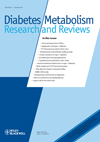Advanced glycated albumin isolated from poorly controlled type 1 diabetes mellitus patients alters macrophage gene expression impairing ABCA-1-mediated reverse cholesterol transport
Abstract
Background
We evaluated the effects of albumin isolated from control individuals and from patients with poorly controlled type 1 diabetes mellitus on macrophage gene expression and on reverse cholesterol transport.
Methods
Serum albumin was purified from control subjects (n = 12) and from patients with poorly controlled type 1 diabetes mellitus (n = 13). 14C-cholesterol-labelled J774 macrophages treated with albumin were employed to measure cholesterol efflux mediated by apo A-I, HDL3 or HDL2, the intracellular lipid accumulation and the cellular ABCA-1 protein content. Agilent arrays (44000 probes) were used to analyse gene expression. Several differentially expressed genes were validated by real-time reverse transcription-PCR using TaqMan Two Step RT-PCR.
Results
Levels of glycation-modified and (carboxymethyl)lysine-modified albumin were higher in diabetic patients than in control subjects. Apo A-I-mediated and HDL2-mediated cellular cholesterol efflux were impaired in macrophages treated with albumin from diabetic patients in comparison with control albumin-treated cells, which was attributed to the reduction in ABCA-1 protein content. Even in the presence of cholesterol acceptors, a higher level of intracellular lipid was observed in macrophages exposed to albumin from diabetic individuals in comparison with the control. The reduction in ABCA-1 content was associated with enhanced expression of stearoyl CoA desaturase 1 and decreased expression of janus kinase 2, which were induced by albumin from patients with type 1 diabetes mellitus.
Conclusions
(Carboxymethyl)lysine-modified albumin isolated from poorly controlled type 1 diabetic patients impairs ABCA-1-mediated reverse cholesterol transport and elicits intracellular lipid accumulation, possibly contributing to atherosclerosis. Copyright © 2012 John Wiley & Sons, Ltd.




